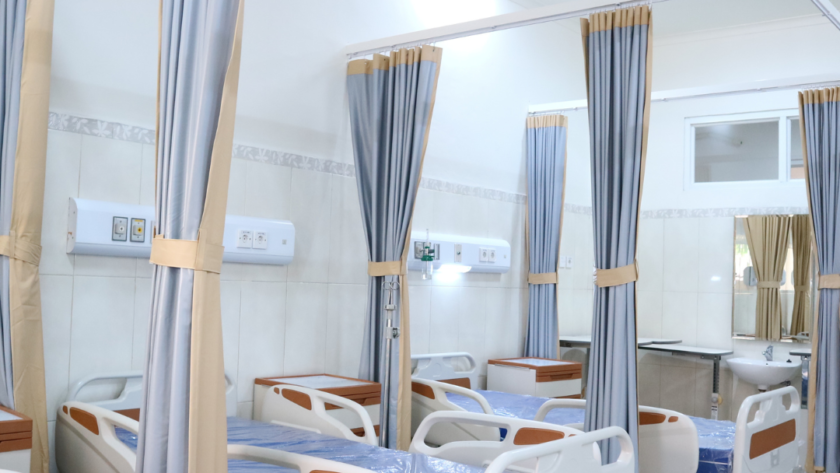Enhancing the patient experience is vital in today’s healthcare environment. As healthcare systems become more patient-centered, the focus on delivering high-quality care that meets patients’ needs and expectations has intensified.
This article delves into effective strategies to improve patient experience, ensuring a more compassionate and efficient healthcare journey.
- Embracing Technology for Personalized Care
In the digital age, incorporating technology into healthcare is pivotal. Electronic health records (EHRs), for instance, provide a comprehensive view of a patient’s health history, enabling personalized care.
Advanced systems can alert physicians to potential medication interactions, recommend personalized treatment plans, and allow patients to access their health data, empowering them with information about their own health.
Telehealth is another technological advancement transforming patient experience. It allows for remote consultations, which is especially beneficial for patients with mobility issues or those in remote areas. By reducing the need for physical visits, telehealth not only saves time but also reduces stress and anxiety associated with in-person appointments.
Moreover, patient portals have become a game-changer. These platforms enable patients to schedule appointments, view test results, and communicate with their healthcare providers, enhancing transparency and engagement in their own care.
By embracing these technological innovations, healthcare providers can offer a more personalized, efficient, and accessible patient experience.
- Pursuing Higher Education for Streamlined Operations
The complexity of healthcare systems necessitates skilled professionals who can efficiently manage operations. Pursuing higher education, particularly an MBA in healthcare administration online equips individuals with the necessary skills to improve healthcare delivery. This specialized education offers insights into the intricacies of healthcare systems, including policy, economics, and management strategies that directly impact patient experience.
Professionals with an MBA in healthcare administration are trained to implement efficient operational procedures, which can significantly reduce wait times and administrative burdens. They learn to analyze data to identify areas needing improvement and to develop strategies that enhance patient satisfaction.
Their education also encompasses leadership and communication skills, which are essential for fostering a patient-centered culture among staff.
By integrating these skills into healthcare administration, operations become more patient-centric, directly enhancing the patient experience. This holistic approach ensures that every aspect of care, from administrative processes to direct patient interactions, is optimized for quality and efficiency.
- Fostering a Culture of Compassion and Empathy
Creating a culture that prioritizes compassion and empathy is fundamental in improving patient experience. Healthcare professionals must understand and empathize with their patients’ experiences and emotions.
Training staff in effective communication, active listening, and emotional intelligence can significantly enhance patient interactions.
Regular staff training sessions on patient-centered care can instill a deep understanding of patients’ perspectives, helping staff to anticipate needs and respond with empathy. Additionally, encouraging feedback from patients and staff can identify areas needing improvement, fostering a culture of continuous learning and empathy.
Healthcare facilities that prioritize a compassionate culture typically see higher patient satisfaction scores. Patients who feel understood and cared for are more likely to adhere to treatment plans, resulting in better health outcomes.
- Ensuring Accessibility and Convenience
Accessibility is a crucial component of patient experience. Healthcare facilities must be easily accessible, both physically and in terms of scheduling. Offering extended hours, having multiple locations, and providing transportation services can make healthcare more accessible to a diverse patient population.
Moreover, simplifying appointment scheduling processes, reducing wait times, and ensuring efficient in-clinic workflows can significantly improve the overall experience. Facilities should strive to create a welcoming and comfortable environment, reducing anxiety and stress associated with medical visits.
Integrating accessibility into the design of healthcare services demonstrates a commitment to inclusivity, ensuring that all patients, regardless of their circumstances, receive high-quality care.
- Continuously Measuring and Improving Quality of Care
Continuous improvement is key to enhancing patient experience. Regularly measuring patient satisfaction through surveys and feedback forms can provide valuable insights. These metrics should be analyzed to identify trends and areas for improvement.
Implementing quality improvement initiatives based on this feedback is crucial. Whether it’s improving communication, reducing wait times, or enhancing facility amenities, every change should aim to enhance patient satisfaction.
Furthermore, involving patients in decision-making processes regarding their treatment and care can lead to more personalized and effective care plans. Engaging with patients as partners in their healthcare journey fosters trust and satisfaction.
- Integrating Holistic Health Approaches
Incorporating holistic health approaches is a powerful strategy for improving patient experience. Holistic health focuses on treating the whole person, not just the symptoms of a disease. This approach includes integrating alternative therapies like acupuncture, massage therapy, and mindfulness practices alongside conventional medicine.
By acknowledging the mental, emotional, and spiritual aspects of health, healthcare providers can offer a more comprehensive and personalized care experience.
Conclusion
Improving patient experience requires a multifaceted approach that includes embracing technology, pursuing advanced education, fostering a culture of empathy, ensuring accessibility, and continuously striving for quality improvement.
By implementing these strategies, healthcare providers can create a more patient-centered environment that not only meets but exceeds patients’ expectations.



